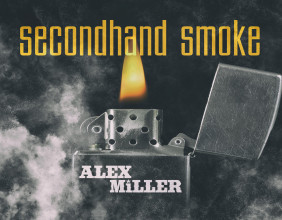In January 2016, Australia-based mineral explorer Mount Burgess Mining NL (ASX:MTB) was granted a Prospecting Licence PL 43/2016 over the Kihabe- Nxuu Zinc, Lead, Silver, Vanadium and Germanium Project in Botswana. Ever since, two incidents have successfully garnered market and media interest towards the Company.
Firstly, its intention to concentrate on developing the Nxuu Deposit, a polymetallic deposit containing Zinc, Lead, Silver, Germanium and Vanadium, announced in 2018. Secondly, the renewal of PL 43/2016 (The Kihabe – Nxuu Project) in November 2018 for a further two years to 31 December 2020, with a right to renew beyond that for a further two years to 31 December 2022.
What would have possibly propelled MTB, which has previously discovered the Red October Gold Deposit in Western Australia and three kimberlites in Namibia, to add a new direction to its project portfolio by diving into the Botswana Project? Let’s find out!
Kihabe – Nxuu Project : Mineralisation Style
The Kihabe – Nxuu Zn/Pb/Ag/V/Ge Project is situated in Western Ngamiland, Botswana on the Namibia border. Before MTB, the Project’s Prospecting Licence was held under PL 69/2003.
The Kihabe-Nxuu project is a SEDEX (Sedimentary Exahalitive) mineralised system within a Neo-proterozoic belt where mineralisation occurs in a quartz wacke, in contact with the local dolostone. MTB has been successful in developing resources at two deposits of the Project that 7 kms apart - Kihabe and Nxuu deposits.
In 2019, MTB focused on developing the Nxuu Deposit, which is a shallow basin shaped deposit with a maximum depth of 64 meters. As an oxide deposit, it presents as a potential low cost, low risk operation, with the potential for onsite recovery processes to be applied, thereby achieving beneficiation within Botswana.
Project Elements
Licence Title
Mount Burgess (Botswana) (Proprietary) Ltd, a wholly owned subsidiary of MTB won the PL 43/2016 in 2016, after close to three years of litigation in the High Court and Appeal Court of Botswana. Post a second two term extension up to 31 December 2020, the Company is entitled to apply for a third two-year term to 31 December 2022.
Resources
MTB has developed 2004 JORC compliant Indicated and Inferred resources amounting to 25 million tonnes @ 3% Zn/ Pb equivalent grade, including 3.3 million ozs of Ag. Besides this, both the deposits, Kihabe and Nxuu, contain credits of Germanium and Vanadium mineralisation.
Vanadium Prospects
It is a well-known fact that, Vanadium is a crucial element as Vanadium Redox Flow (batteries for electric vehicles), produced from Vanadium Pentoxide (V2O5), that can store gigawatts of power over long periods of time. Moreover, they result in less power loss and offer a long-life span with little deterioration when subject to significant variation in high/low power storage capacity.
The Vanadium at the Nxuu deposit is hosted in oxide vanadate DESCLOIZITE. The equivalent mass of V2O5 is 1.785 times the total mass of Vanadium. As per the company, 82% of vanadium equivalent can be recovered on site from DESCLOIZITE via flotation using a Hydroxamate oxide collector for recovery to a concentrate, followed by simple hydrometallurgical procedure to produce V2O5.
Interestingly, there are over 80.4% recoveries of V2O5 mineralised zones in the Nxuu Deposit that would add significant dimension to overall recoverable Zn, Pb, Ag, Ge, V mineralised zones.
This 80.40% of marketable V2O5 can be recovered from DESCLOIZITE through the simple process of flotation. A Hydroxamate collector can be used for recovery, as opposed to producing from magnetite deposits, where most of the globe’s V2O5 comes from currently. MTB opines that this is an environment friendly recovery process as it does not necessitate potassium salt roasting or smelting to 1,0000 C.
Test Work Update
In its recently released December 2019 Quarter results, MTB notified that it has made significant progress with test works at the Nxuu Deposit. These include-
- The STEINERT Sensor Sorter test work and Mineralogical and Metallurgical test work - confirm the presence of Vanadium at the deposit.
- Bulk Sensor Sorter test work- The planning is in progress, while MTB has been reviewing the availability of representative grade ½ HQ diamond core from the Nxuu Deposit with ~360 kg of ½ HQ diamond core selected from 10 HQ diamond core holes drilled within the overall mineralised domains
- Multishaft Vertical Milling test work – To be undertaken by Energy and Densification Systems (Pty) Ltd. MTB selected 1,200 kg of ½ HQ diamond core from 14 HQ diamond core holes drilled within the overall mineralised domains of the Nxuu Deposit.
It should be noted that the Sensor Sorter test work have reduced milling and downstream treatment processes, minimised water consumption, environmental footprint, capital and treatment costs and upgraded pre-concentrated mental grade levels.
Nxuu Deposit Attributes
Now that we understand the activities that are developing the oxidized Nxuu deposit, let us graze over few of its unique attributes-

MTB’s Way Ahead
In the coming days, Energy and Densification Systems (Pty) Ltd will undertake the procedure on the selected 1,200 kg of ½ HQ diamond core samples. The Company believes that there are good chances for this process (Multi-shaft Vertical milling) to be a successful one, given the oxidised nature of the Nxuu deposit.
The success of the process is likely to result in improved energy efficiency, reduced capital cost, power reductions, smaller footprint, low weight and quick installation time and would require no civils for construction.
Besides this, the Company remains in discussions with the Botswana Power Corporation pertaining to the supply of grid power along with solar/hybrid power providers.
MTB last traded at $0.002 on 19 February 2020.





